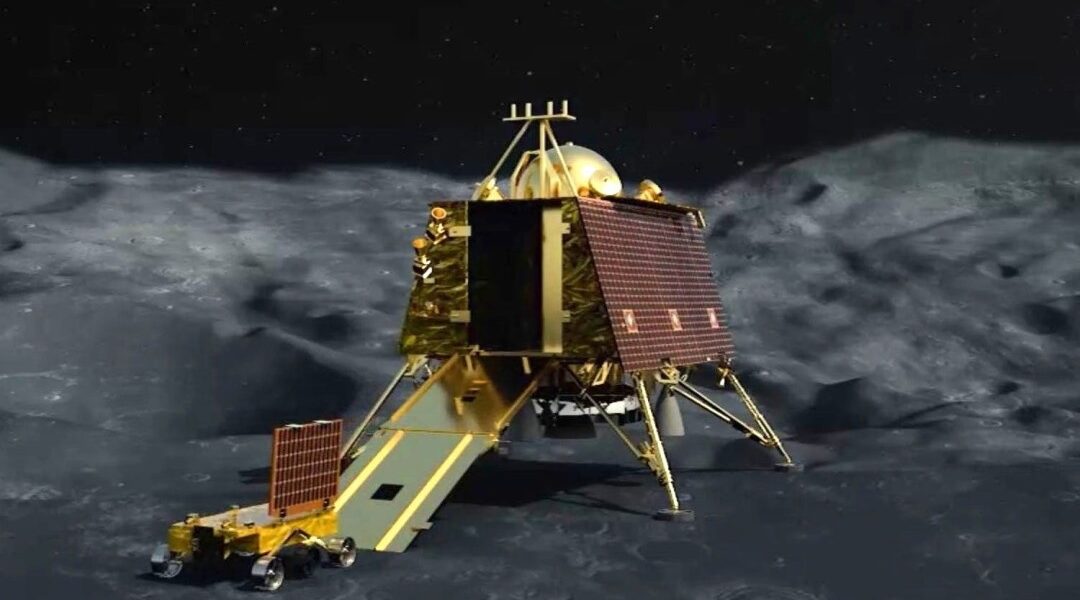India’s Moon mission Chandrayaan-3 made a historic touch down on the lunar south pole on Wednesday afternoon, propelling the South Asian country to an exclusive club to land on the moon.
In a significant boost to India’s space prowess, the LM, comprising the lander (Vikram) and the 26 kg rover (Pragyan), made the soft landing near the south polar region of the Moon at 6.04 pm, less than a week after a similar Russian lander crashed.
With this touchdown on the moon in the second attempt in four years, India has become the fourth country to master soft-landing technology on the lunar surface after the US, China and the erstwhile Soviet Union.
Chandrayaan-3 is a follow-on mission to Chandrayaan-2, and its objectives are to demonstrate a safe and soft landing on the lunar surface, rive on the Moon, and to conduct in-situ scientific experiments.
Chandrayaan-2 had failed in its lunar phase when its lander ‘Vikram’ crashed into the surface of the Moon minutes before the touchdown following anomalies in the braking system in the lander while attempting a landing on September 7, 2019. Chandrayaan’s maiden mission was in 2008.
The Rs 600 crore Chandrayaan-3 mission was launched on July 14 onboard Launch Vehicle Mark-III (LVM-3) rocket for a 41-day voyage to reach near the lunar south pole.
The soft landing occurred days after Russia’s Luna-25 spacecraft crashed into the Moon after spinning out of control.
The lander and the six-wheeled rover (with a total mass of 1,752 kg) are designed to operate for one lunar daylight period (about 14 Earth days). With four legs, the lander had multiple sensors to ensure a safe touchdown, including an accelerometer, altimeters, Doppler velocimeter, inclinometer, touchdown sensor, and a suite of cameras for hazard avoidance and positional knowledge.

